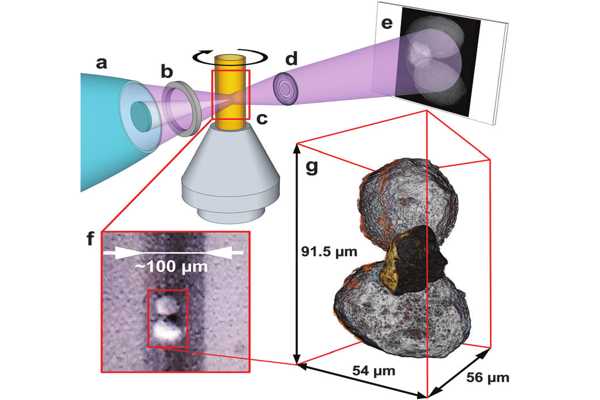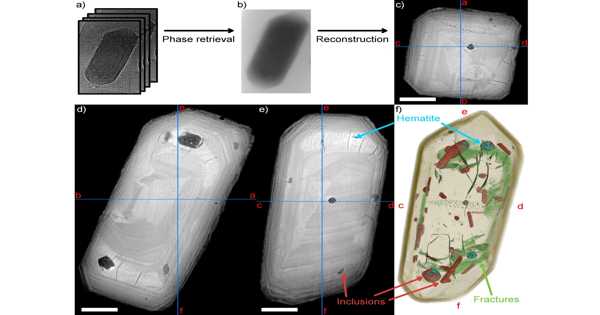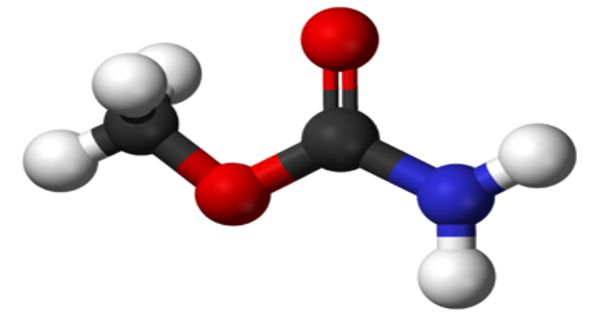For a long time, it has been known that if you want to study the movement and behavior of single atoms, electron microscopy can provide what X-rays cannot. X-rays are good at penetrating samples, they can see what happens inside batteries as they charge and discharge, for example, but they have historically not been able to image spatially with the same precision that electrons can.
Scientists, on the other hand, are working to improve the image resolution of X-ray techniques. X-ray tomography is one such method, which allows for non-invasive imaging of the insides of materials. If you want to map the complexities of a microcircuit, for example, or trace the neurons in a brain without destroying the material, you need X-ray tomography, and the higher the resolution, the smaller the phenomena you can trace with the X-ray beam.
To that end, a team of scientists led by the United States Department of Energy’s (DOE) Argonne National Laboratory developed a new method for improving the resolution of hard X-ray nanotomography. (Nanotomography is nanometer-scale X-ray imaging.) In comparison, a human hair is 100,000 nanometers wide on average.) The team built a high-resolution X-ray microscope with the Advanced Photon Source (APSpowerful)’s X-ray beams and developed new computer algorithms to compensate for issues encountered at such small scales. Using this method, the team was able to achieve a resolution of fewer than 10 nanometers.
Scientists constructed a high-resolution X-ray microscope using the powerful X-ray beams of the Advanced Photon Source and created new computer algorithms to compensate for issues encountered at tiny scales. Using this method, the team achieved a resolution below 10 nanometers.
“We want to be at 10 nanometers or better,” said Michael Wojcik, a physicist in Argonne’s X-ray Science Division’s optics group (XSD). “We developed this for nanotomography because we can obtain 3D information in the 10-nanometer range faster than other methods, but the optics and algorithm can also be applied to other X-ray techniques.”
Using the APS’s in-house Transmission X-ray Microscope (TXM) and special lenses fashioned by Wojcik at the Center for Nanoscale Materials (CNM), the team was able to use the unique properties of X-rays to achieve high-resolution 3D images in about an hour. However, even those images were not at the desired resolution, so the team developed a new computer-driven technique to improve them even further.

The primary issues addressed by the team were sample drift and deformation. At these small scales, if the sample moves within the beam, even by a few nanometers, or if the X-ray beam causes even the slightest change in the sample, motion artifacts will appear on the 3D image of the sample. This can make further analysis extremely difficult.
At that small scale, sample drift can be caused by a variety of factors, including temperature changes. Tomography requires the samples to be rotated very precisely within the beam, which can result in motion errors that appear as sample drifts in the data. The new algorithm developed by the Argonne team addresses these issues, resulting in a clearer and sharper 3D image.
“We created an algorithm that compensates for drift and deformation,” said Viktor Nikitin, an Argonne research associate in XSD. “We achieved a resolution in the 16-nanometer range using standard 3D reconstruction methods, but with the algorithm, we got it down to 10 nanometers.”
The research team put their equipment and technique to the test in a variety of ways. They began by taking 2D and 3D images of a tiny plate with 16-nanometer-wide features created by Kenan Li, who was previously at Northwestern University and is now at DOE’s SLAC National Accelerator Laboratory. They were able to image minute flaws in the structure of the plate. They then put it to the test on an actual electrochemical energy storage device, peering inside and capturing high-resolution images with the X-rays.
The paper’s lead author is Vincent de Andrade, who was a beamline scientist at Argonne at the time of the research. “Even though these results are outstanding,” he said, “this new technique still has a lot of room to improve.”
The capabilities of this instrument and technique will improve as a result of ongoing research and development on optics and detectors, as well as the APS’s ongoing upgrade. When finished, the upgraded facility will produce high-energy X-ray beams that are up to 500 times brighter than those currently available, and future advances in X-ray optics will allow for even narrower beams with higher resolution.
“After the upgrade, we’ll aim for eight nanometers or less,” Nikitin said. “We hope that this will be a powerful tool for research on ever-smaller scales.”
















